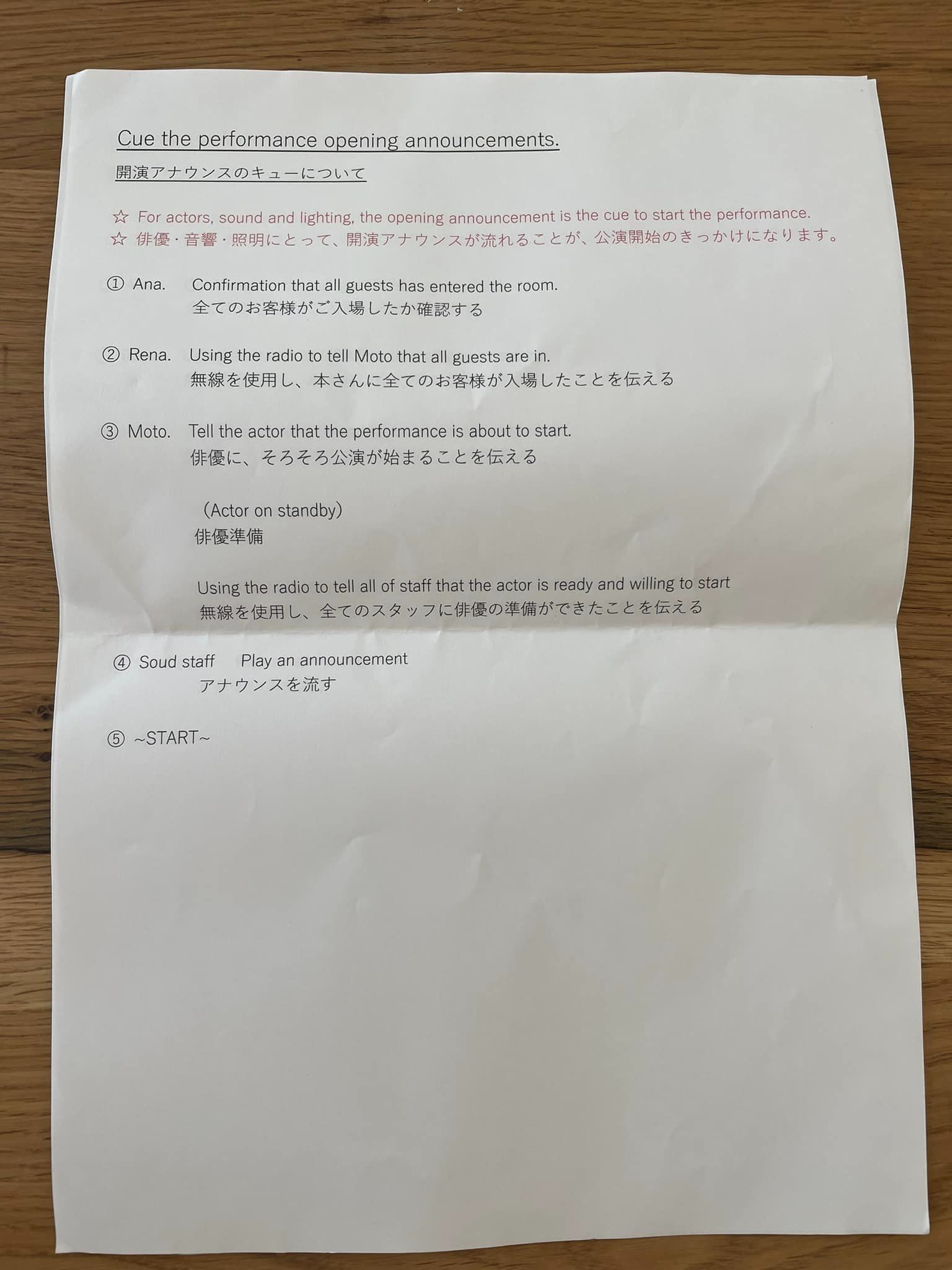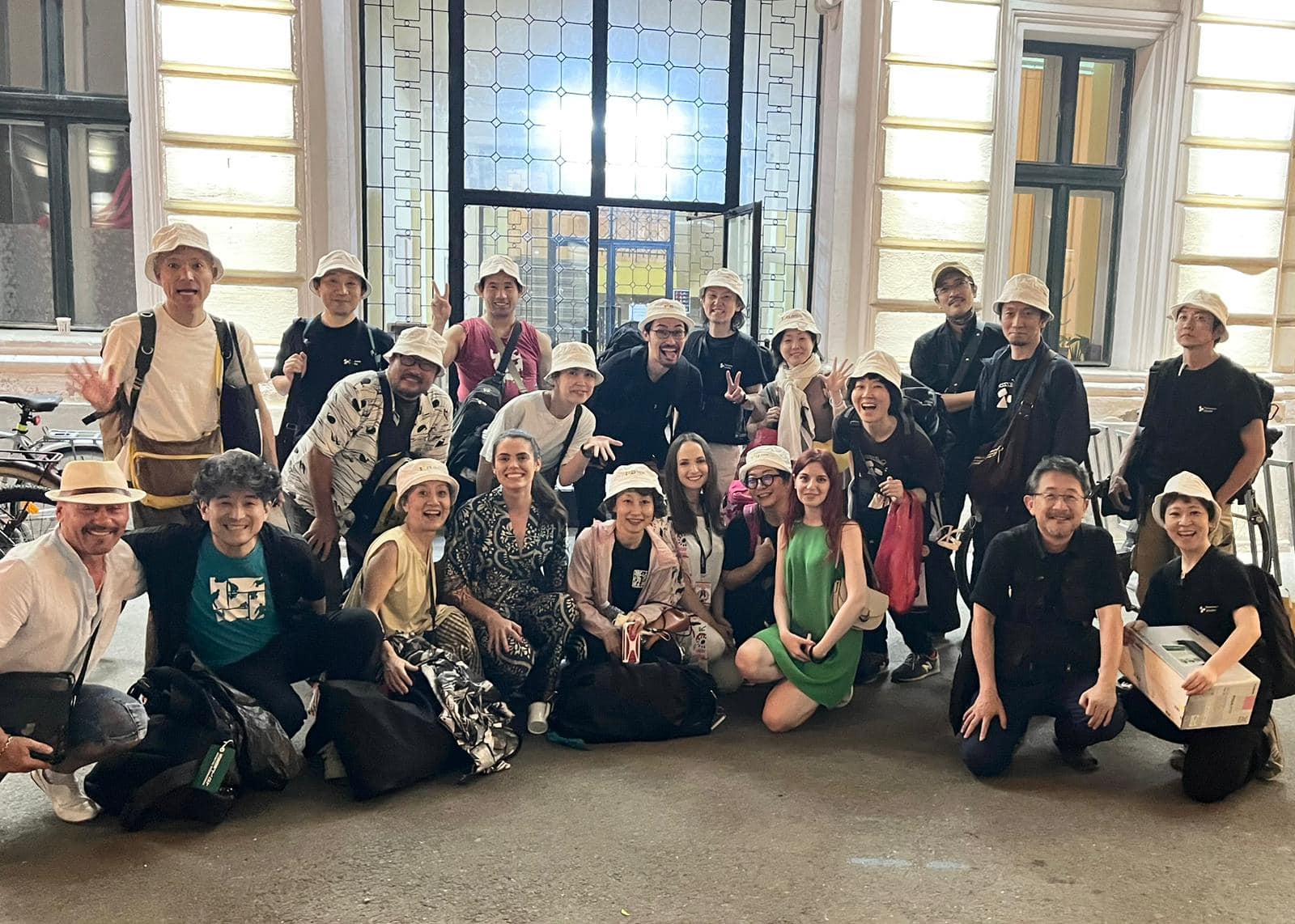






written by Ivona Iacob
This year, within the context of Timisoara as capital of culture, we were offered the opportunity to collaborate with Yamanote Jijosha, a Japanese theater company, to bring one of their performances, Checkhov’s “The Seagull”, to our town for the very first time. The performance would be a part of our annual theater festival, dedicated to increasing accessibility to the performing arts and encouraging the creation of connections and dialogues through culture. We were excited about the opportunity to bring Yamanote Jijosha, a theatrical company with an extensive portfolio of performances in Japan as well as abroad, and a particular style of modernizing theatrical experiences through trial on stage.
We were fortunate enough to discover a suitable space for the performance in the German Theater’s stage in our city. Yamanote Jijosha’s performing techniques are characterized by specific restricted movements, as well as sparse set design in a narrow space, a performing style named “Yojo-han.” Thus the German Theatre provided just the right amount of intimacy and narrowness that a performing hall can offer, so that the audience, albeit not small, could feel the effects of the performance to the full extent. In the day leading up to the event, shortly after their arrival in Timisoara, Yamanote Jijosha’s team was already working hard to prepare the space and ensure that their set and markers were precisely arranged, in a work ethic that one could say almost mirrored the exactness of the Yojo-han style itself.
The evening of the performance arrived quickly and we all welcomed our enthusiastic public with pamphlets about Yamanote Jijosha. However, even with all the excitement that preceded the play, the real magic happened after the proverbial opening of the curtain (as there was no real curtain). In a spectacular interpretation of The Seagull, Yamanote Jijosha asked the audience to almost abandon what they may have known about the material beforehand and added layers of complexity, both in narrative and artistic form. With the introduction of a narrator, the play took on a new stylistic meaning, almost perhaps an incursion into the heart of the play. The specific choreography and costumes of the characters emphasized the roles the actors played in the performance, bringing to life the metaphor of the seagull itself. Those already afflicted by life moved about the space in almost broken movements, their make-up washing away signs of life. Their costumes further emphasized the stuffed seagull imagery, incapable of flight and living. As other characters gradually became afflicted by the same metaphor, they too took on these physical transformations. Director Masahiro Yasuda thus deconstructed the traditional and reinvented it within the space of a Yojo-han, the Japanese tearoom size.

While the performance may have been constricted to a specific space, the emotions it brought out far exceeded that. The end of the play was followed by a lengthy standing ovation, which was a testament to the audience’s receptiveness to Yamanote Jijosha’s theatrical innovations. The play was accompanied by subtitles in Romanian and English, was directed and performed by Japanese actors, had a Russian base material and played in front of a Romanian audience. This unique combination of elements provided the audience with an extraordinary opportunity to witness what the performing arts can be: an interweaving of cultural connections within the fabric of humanity.

Timisoara’s slogan as capital of culture, “shine your light” invites citizens to discover both the light inside them and the light that our cultural heritage has to offer. However, with EU Japan Fest’s assistance and Yamanote Jijosha’s collaboration, we were able to shine that light much further, beyond national and European borders. With Sunlight Theatre, we hope to foster cultural connections every year and make the performing arts more visible and accessible, so having that kind of “light” shone into our festival this year, we feel closer to achieving this purpose.

After the end of the play, when the curtain had long fallen and the equipment was safely tucked away in its transportation truck, we, along with Yamanote Jijosha’s team, stood in front of the National Theater and watched the truck drive away. Not with a sense of nostalgia, but rather filled with the energy of a new beginning and what we hope to be only the start of a long and fruitful collaboration.
